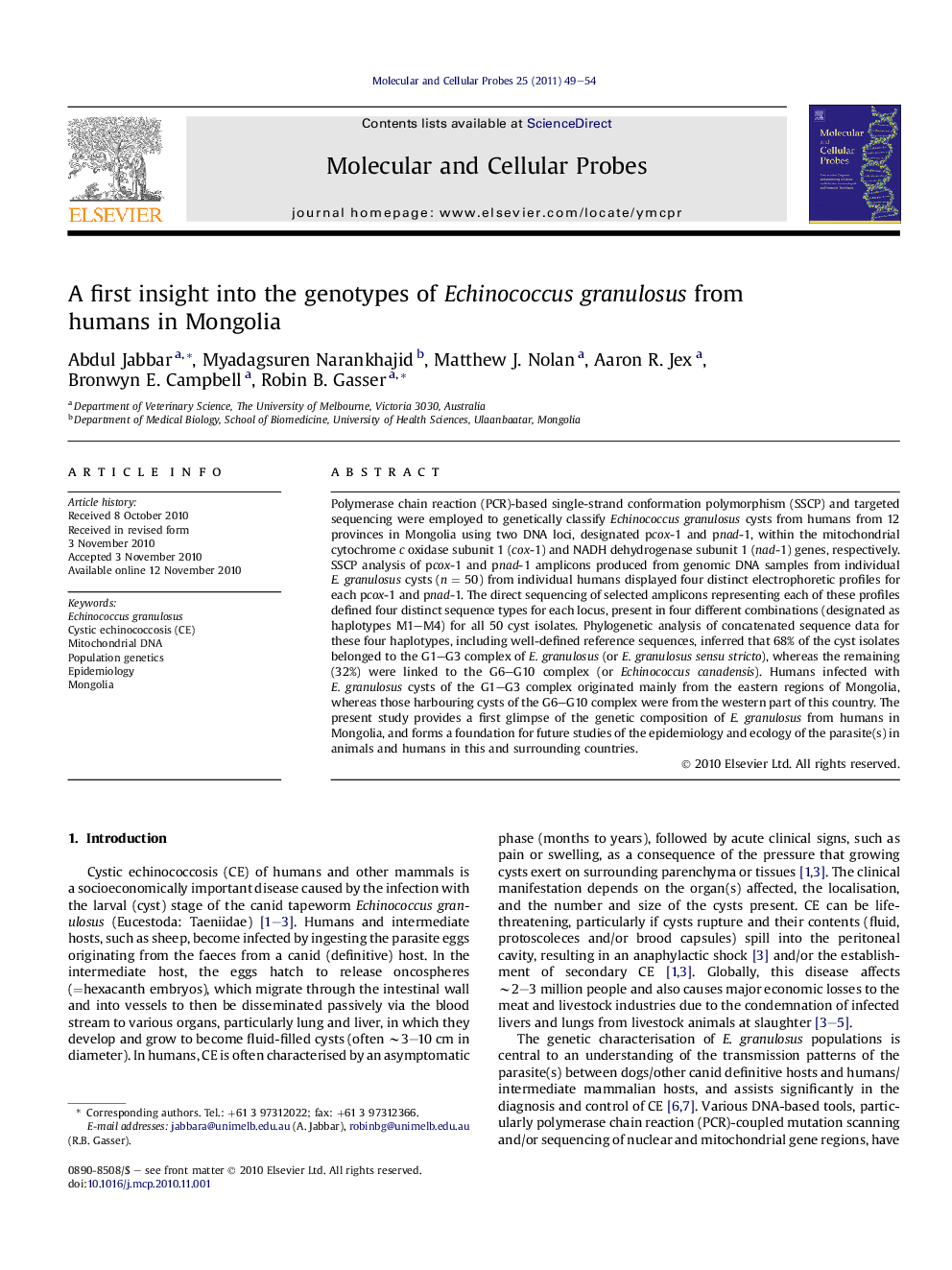| Article ID | Journal | Published Year | Pages | File Type |
|---|---|---|---|---|
| 2199805 | Molecular and Cellular Probes | 2011 | 6 Pages |
Polymerase chain reaction (PCR)-based single-strand conformation polymorphism (SSCP) and targeted sequencing were employed to genetically classify Echinococcus granulosus cysts from humans from 12 provinces in Mongolia using two DNA loci, designated pcox-1 and pnad-1, within the mitochondrial cytochrome c oxidase subunit 1 (cox-1) and NADH dehydrogenase subunit 1 (nad-1) genes, respectively. SSCP analysis of pcox-1 and pnad-1 amplicons produced from genomic DNA samples from individual E. granulosus cysts (n = 50) from individual humans displayed four distinct electrophoretic profiles for each pcox-1 and pnad-1. The direct sequencing of selected amplicons representing each of these profiles defined four distinct sequence types for each locus, present in four different combinations (designated as haplotypes M1–M4) for all 50 cyst isolates. Phylogenetic analysis of concatenated sequence data for these four haplotypes, including well-defined reference sequences, inferred that 68% of the cyst isolates belonged to the G1–G3 complex of E. granulosus (or E. granulosus sensu stricto), whereas the remaining (32%) were linked to the G6–G10 complex (or Echinococcus canadensis). Humans infected with E. granulosus cysts of the G1–G3 complex originated mainly from the eastern regions of Mongolia, whereas those harbouring cysts of the G6–G10 complex were from the western part of this country. The present study provides a first glimpse of the genetic composition of E. granulosus from humans in Mongolia, and forms a foundation for future studies of the epidemiology and ecology of the parasite(s) in animals and humans in this and surrounding countries.
